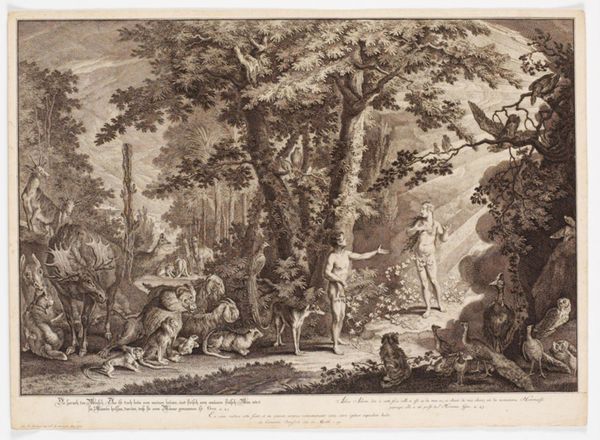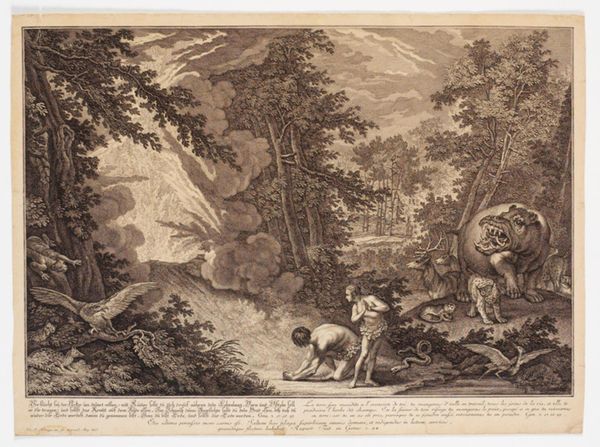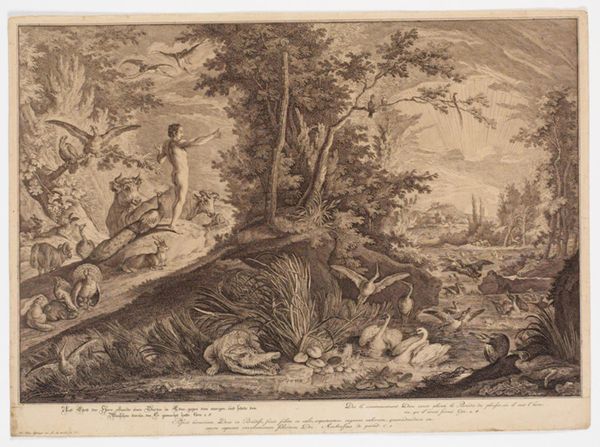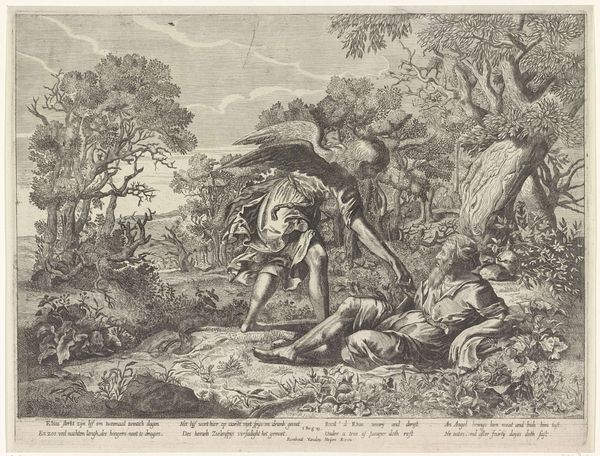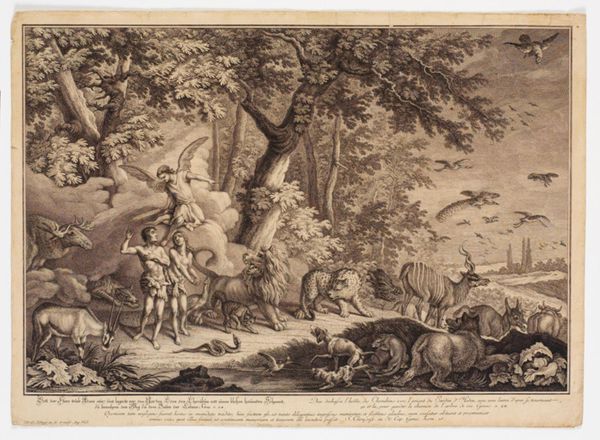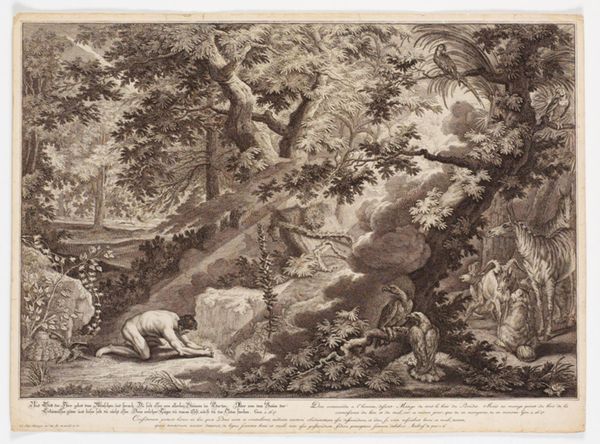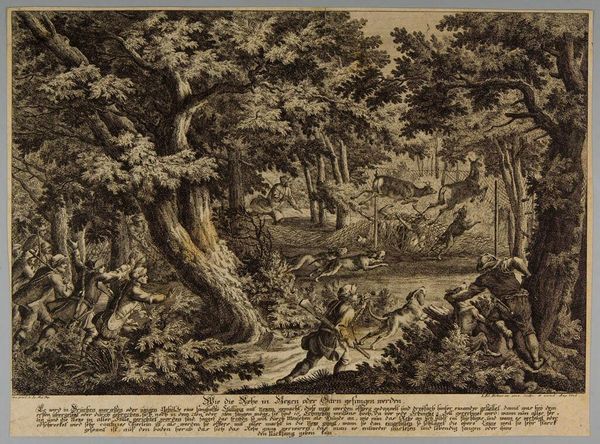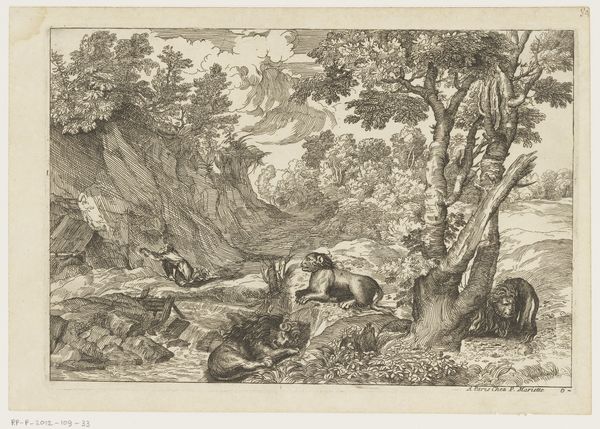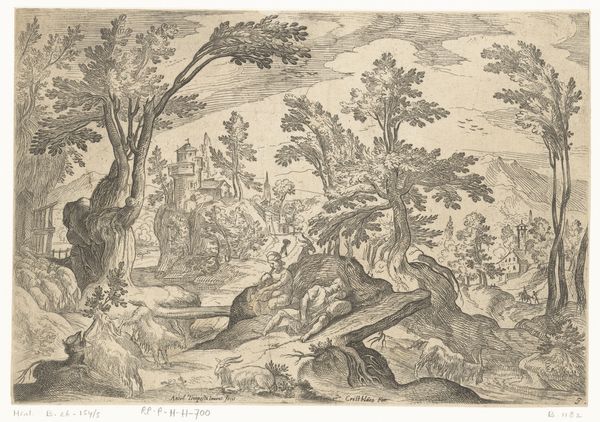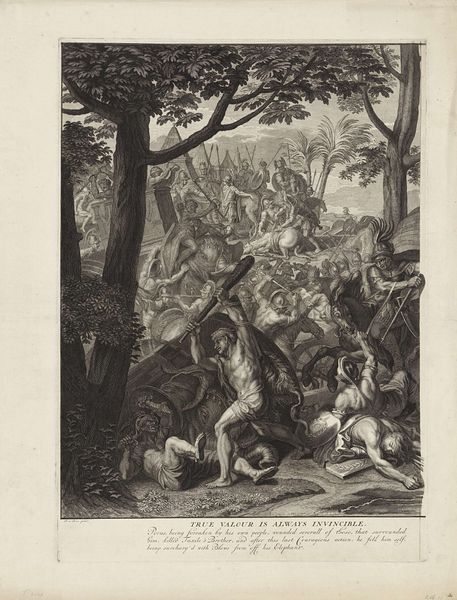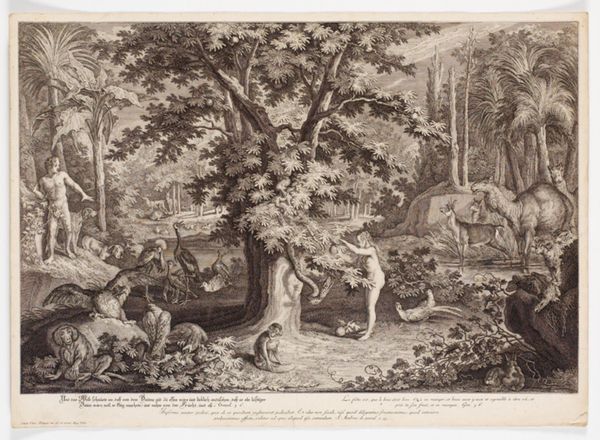
print, engraving
#
baroque
# print
#
landscape
#
charcoal drawing
#
figuration
#
pencil drawing
#
history-painting
#
engraving
Dimensions: 393 mm (height) x 540 mm (width) (bladmaal)
Editor: This print, titled "Evas skabelse," or "The Creation of Eve," by Johann Elias Ridinger, dates from the 18th century and depicts a baroque-style scene of the Garden of Eden. It has an almost dreamlike quality to it. How do you interpret this work within its historical context? Curator: The Garden of Eden is often presented as an idyllic space devoid of conflict, but I see in this work an emerging power dynamic, ripe for examination through a feminist lens. What's particularly striking is how Eve is literally birthed from Adam's body, reinforcing the idea of her as secondary, as 'other'. The lush landscape is teeming with animals, observing this pivotal moment, creating a stage for future events. Editor: So you’re saying that the apparent beauty of the print could also represent a certain… construction? Curator: Exactly! Consider the role of visual language in perpetuating these narratives. The engraving technique itself lends a sense of authority, mimicking the precision and control often associated with patriarchal structures. The fact that Ridinger chose to depict this scene – Eve's creation – says a lot about what narratives were deemed important, worthy of being immortalized through art. Editor: It’s strange to consider a print like this not just as a depiction of a biblical story but as a representation of broader cultural attitudes. Curator: Think about the societal structures and power dynamics implicit in the narrative. Doesn’t the presence of so many animals contribute to the construction of the “natural” world as something to be dominated or used, just like Eve herself, by extension, is brought into creation for a particular purpose? Editor: I see what you mean! I originally saw this as just a scene from the Bible, but viewing it through an intersectional lens makes me see it differently now. Curator: Right! By acknowledging the embedded power structures, we can move toward a more conscious reading of both historical artwork and today's societal landscape.
Comments
No comments
Be the first to comment and join the conversation on the ultimate creative platform.
